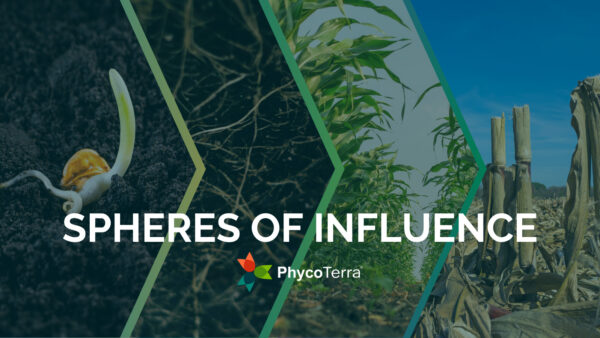The Global Crop Diversity Trust is campaigning to save the Pavlovsk seed collection from real estate developers.
Late in the summer of 1941, Abraham Kameraz and Olga Voskresenskaia were harvesting potatoes. Frantically. Scientists specializing in the tubers, they oversaw the Soviet Union’s vast breeding-stock collection of 6000 varieties conserved in the fields of the Pavlovsk Experiment Station 45 km southeast of Leningrad (now St. Petersburg).
The Nazis were quickly approaching. Within days they would occupy the research station and proceed to cut off all exits from Leningrad, initiating a blockage and siege that would last 872 days and cost the lives of more than a million people.
Pavlovsk Still Threatened Despite Progress
Since this article was written, there has been some progress on the issue. Legally, the land on which the Pavlovsk collection is situated is divided into two portions, one containing the forage collection and the other Station’s famous collection of fruits and berries. The Russian Housing Development Foundation, the agency attempting to seize the land, has recently granted a “reprieve” for the forages. They propose to establish a scientific commission to evaluate the uniqueness and importance of the collection—presumably the entire collection—and possibly to give Pavlovsk 5-7 years to move the forage collection. Unfortunately, the fate of the larger and even more important fruit and berry collection remains unclear.
Cary Fowler, executive director of the Global Crop Diversity Trust, welcomes the move to establish a commission to provide scientific input. “It’s a positive step and we are grateful that the authorities have chosen to listen to the scientific community and provide a more transparent process.” But, he cautions that the threat of destruction still hangs over the fruit and berry collection because the developers have given no signals that they are willing to forego the bull-dozing of that parcel of land.
At Pavlovsk, Kameraz and Voskresenskaia succeeded in digging up the collection from fields under fire by German artillery, and transporting it back to Leningrad for storage in the basement of what was already the most famous seed bank in the world. But the job was not over.
Tragically, neither would live to see it completed.
The winter of 1941-42 was especially cold and cruel. All food supplies to the city were cut off. There was constant shelling. People were reduced to eating anything. Dog, cats, rats, dirt and even each other.
But in the institute on St. Isaacs Square, the scientists were protecting the seeds and the potatoes. They were dying doing it. Some thirty scientists and staff died, essentially of starvation that winter. The curator of the rice collection died surrounded by bags of rice. Kameraz and Voskrensenskaia succumbed, protecting their potatoes in the cellar to the very end.
The seedbank was already missing its director, the most famous geneticist and agricultural scientist of the day, Nicolai Vavilov. Stalin believed in a now discredited scientific hypothesis—the inheritance of acquired characteristics. Socialist “man” would beget socialist offspring. His trusted, politically-correct scientific advisor, Lysenko backed him. Vavilov, the real scientist, was pitched into jail and deemed an enemy of the state for not towing the line. Two years later he died there. Of starvation.
Before his imprisonment, Vavilov amassed the first global collections of crop diversity and penned works that explained the origin of agricultural crops—work that led agricultural scientists to the locations most advantageous for collecting the diversity, and the traits, needed to fuel plant breeding. Modern agricultural productivity from then until now has rested on this body of work.
Why did Vavilov’s scientists willingly sacrifice their lives to save a bunch of seeds? Were they crazy? I asked that question myself on my first visit—a pilgrimage of sorts—in 1985. “We were students of Vavilov,” an old woman told me. She went on to explain that they understood the collections would be essential to reestablishing Soviet agriculture after the war.
Founded by Vavilov himself in 1926, the Pavlovsk Station where the struggle to conserve crop diversity really began, now houses Europe’s largest collection of fruits and berries. Six hundred different apple varieties. A thousand strawberries. More than a thousand black and red currants, and hundreds of varieties of other fruits and berries. 5700 varieties in all, 90% of which are conserved nowhere else.
To some, it may be just a bunch of fruits and berries. Indeed, the developers argued that because the collection was “priceless” it was also “worthless.” Even the “minor crop” collections housed at the Station, however, can be credited with generating gigantic, recurring economic returns.
Some 60 percent of the black currant varieties grown in Russia, the world’s largest producer, were developed at Pavlovsk. It’s a crop that generates more than $400 million in farm sales annually in Russia. Throw in the collection’s importance to apple and strawberry and the other crops, and the significance of Pavlovsk becomes evident.
Despite the heroism during World War II, today the collection faces its most serious threat. It doesn’t come from jack-booted Nazis and their bombs, or Stalin and his henchmen. It comes from real estate developers.
Citing a new law that allows the takeover of public lands not “efficiently” used, a court turned over the land to developers this week. Unless the President or Prime Minister overturn the ruling, the developers will rip out the collection before the end of the year to construct houses.
The struggle to save this biodiversity from extinction thus enters the political arena. There we have a real but fleeting chance.
One can only hope that the Russian leadership will reverse the court if and when the Russian leadership actually hears about the threat to the Pavlovsk Station and realizes its importance.
The Trust is a scientific not a political organization. But we cannot remain silent. We’re betting you can’t either. Never before in history will so much crop diversity be lost intentionally and avoidably as the day the bull-dozers roar into Pavlovsk.
We believe the bull-dozers can be stopped. You don’t have to enlist in the army to fight this battle. You are not called upon die of starvation to protect these plants. But you can:
• Sign a petition
online at http://bit.ly/PavlovskPetition
• Write a letter to the President and Prime Minister (with a copy to the Russian ambassador in your country)
• Tweet President Dmitry Medvedev
• Forward this article to others, post it on your websites and blogs and encourage friends and contacts to take action.
The Pavlovsk collection has survived more than 80 years. It has survived fascism, communism and even military assault. Can it survive real estate developers?
The second siege needs to be turned back like the first.
Editor’s Note: Reprinted with permission from the Global Crop Diversity Trust.













